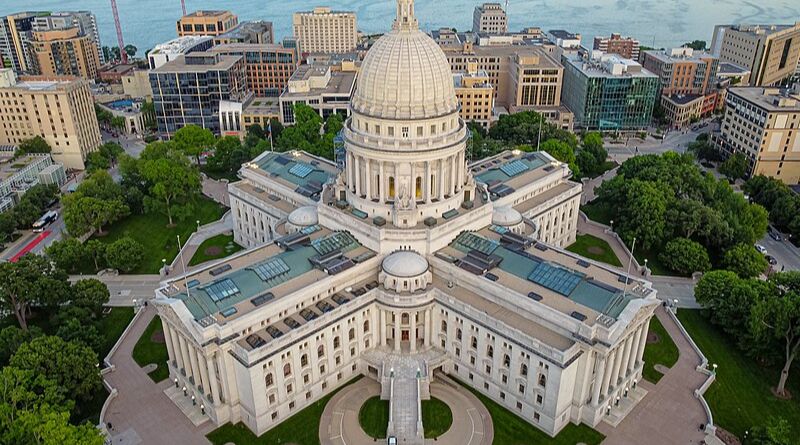When people refer to “Arch City,” they are often talking about St. Louis, Missouri. Known for its iconic Gateway Arch, St. Louis has a rich history and a vibrant culture that draws visitors from around the world. In this article, we will explore the significance of St. Louis as the state capital, its historical background, key attractions, and address some frequently asked questions regarding this fascinating city.
Table of Contents
St. Louis: The Arch City
St. Louis is sometimes referred to as the “Arch City” due to the Gateway Arch, a 630-foot monument that stands as a symbol of westward expansion in the United States. Completed in 1965, the arch is not only a remarkable architectural feat but also a national park and a popular tourist destination, drawing millions of visitors each year.
Historical Background
St. Louis was founded in 1764 by French fur traders Pierre Laclède and Auguste Chouteau. The city quickly grew as a pivotal trading post and eventually became an important port on the Mississippi River. Its strategic location helped it flourish, particularly during the 19th century when it became known as a gateway for westward expansion. The city played a crucial role during the Louisiana Purchase, as it served as a launching point for expeditions exploring the newly acquired territories.
In 1822, St. Louis was officially incorporated as a city, and in 1849, it became the seat of government for St. Louis County. Although it is not the state capital of Missouri (which is Jefferson City), St. Louis is often considered a cultural and economic capital due to its size and significance.
Cultural Significance
St. Louis is renowned for its contributions to music, particularly jazz and blues. The city has a rich musical heritage that can be explored at venues such as the Blueberry Hill, where Chuck Berry performed, and the St. Louis Blues Museum. In addition to music, the city is home to various cultural institutions, including the St. Louis Art Museum, Missouri History Museum, and City Museum, which is an interactive and eclectic space for both children and adults.
Attractions
Apart from the Gateway Arch, St. Louis offers a plethora of attractions that cater to various interests:
- Forest Park: Larger than New York’s Central Park, Forest Park is home to museums, a zoo, and beautiful walking paths. It hosted the 1904 World’s Fair and is a great spot for outdoor activities.
- The St. Louis Zoo: Known for its free admission, the zoo features over 600 species of animals and is one of the top zoos in the country.
- The Missouri Botanical Garden: This stunning garden features beautiful landscapes, a tropical rainforest, and the Climatron, a geodesic dome that houses exotic plants.
- Anheuser-Busch Brewery: As the home of Budweiser, visitors can take tours of the brewery to learn about the beer-making process and sample some of the products.
- The Fox Theatre: A historic venue for Broadway shows and concerts, the Fox Theatre is known for its stunning architecture and vibrant atmosphere.
Economic Importance
St. Louis is an economic hub with a diverse economy encompassing healthcare, biotechnology, manufacturing, and transportation. Major companies such as Express Scripts, Emerson Electric, and Anheuser-Busch have their headquarters in the area, contributing to its economic stability and growth.
Frequently Asked Questions
1. Is St. Louis the state capital of Missouri?
No, St. Louis is not the state capital. The capital of Missouri is Jefferson City. However, St. Louis is often referred to as a cultural capital due to its size and influence.
2. What is the Gateway Arch?
The Gateway Arch is a 630-foot monument that represents the westward expansion of the United States. It is the tallest arch in the world and serves as a symbol of St. Louis.
3. What are the main attractions in St. Louis?
Key attractions include the Gateway Arch, Forest Park, the St. Louis Zoo, Missouri Botanical Garden, Anheuser-Busch Brewery, and the Fox Theatre.
4. How can I get to St. Louis?
St. Louis is accessible via several major highways, Amtrak trains, and Lambert-St. Louis International Airport, which offers domestic and international flights.
5. What is the best time to visit St. Louis?
The best time to visit St. Louis is during the spring (March to May) and fall (September to November) when the weather is mild and there are numerous festivals and events.
6. Is St. Louis a family-friendly city?
Yes, St. Louis is very family-friendly, with many attractions and activities suitable for children, including the zoo, museums, and parks.
7. What cultural events occur in St. Louis?
St. Louis hosts various cultural events throughout the year, including the St. Louis Art Fair, the Great Forest Park Balloon Race, and various music festivals celebrating jazz and blues.
8. Can I take a riverboat cruise in St. Louis?
Yes, there are riverboat cruises available on the Mississippi River that offer scenic views of the St. Louis skyline and the Gateway Arch.
Conclusion
St. Louis, often referred to as Arch City, is a vibrant city with a rich history, cultural significance, and numerous attractions. While it may not be the state capital of Missouri, its role as a cultural and economic center makes it an essential destination for both residents and visitors. Whether you’re interested in exploring its historic sites, enjoying its music scene, or visiting its many parks and museums, St. Louis has something to offer everyone.
